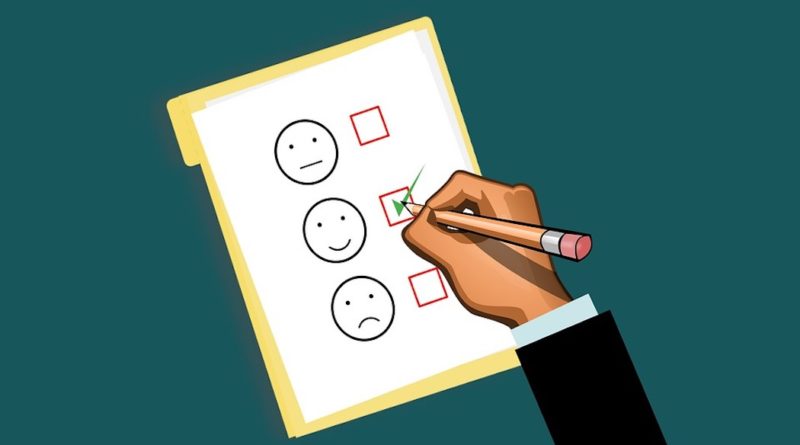OPINION: Male Professors Should Discuss Misogyny in SETs
Mary McLoughlin
Opinion Editor
SET surveys allow students to give feedback to their professors, which can originate from sexist biases. Cover photo courtesy of Pixabay
My first semester at UD, I had a professor who I loathed. When I found out about SET surveys, I was excited to air all my concerns. I was pretty brutal in my evaluation. While drafting my response, I remember characterizing her with words that ranged from “mean” to “cold” to “aggressive.” I felt a vindictive rush when I pressed submit.
The day after I submitted my evaluation, that same professor talked to us about gender-bias in student evaluations. She explained that often the words students use to critique female professors come from stereotypes students hold about certain genders and races. She gave us an example—students are far more likely to call a female professor “cold” because society punishes women who stray from the expectation that women are supposed to be warm and nurturing.
My stomach sank a little when I realized that my evaluation of her might have been sexist. I tried to shake the feeling of guilt by assuring myself that since I was a woman myself, I probably didn’t hate women. In fact, I was a feminist! But I realized she was right. The things I resented about my female professors were very different than the things I resented about my male professors.
Gender-bias doesn’t occur in student evaluations because students actively look down on upon professors who are women. Rather, student evaluations reflect a certain degree of internalized misogyny.
In her book, “Down Girl,” philosopher Kate Manne explains that misogyny isn’t simply about hating all women. She writes that “misogyny ought to be understood as the system that operates within a patriarchal social order to police and enforce women’s subordination and to uphold male dominance.” Manne argues that misogyny is mobilized to punish women who stray from their expected role of caregiver.
In an article for Inside Higher Ed, Kaitlin Mulhere explains how this misogyny works in student evaluations. She writes, “female instructors are expected to be nurturing and supportive; when they’re not, it may count against them in evaluations. At the same time, if they are nurturing and supportive, female instructors risk being perceived as less authoritative and knowledgeable than their male counterparts.”
See also- OPINION: Rescinding DACA Protects Racism, Not America
There’s a good deal of research to support the argument that misogynistic and racist stereotypes impact the way students rate their professors. In a 2019 study of student evaluations conducted by Kerry Chavez and Kristina M.W. Mitchell and published by Cambridge University Press, Chavez and Mitchell compared the evaluations of faculty members teaching an identical online course. They found that both women and people of color received lower ratings than white men even though there were no differences in the classes that they taught.
A 2017 study conducted by Anne Boring which analyzed SET surveys across a single university found that students ranked their teachers on the basis of gender stereotypes. Boring found that while male students were likely to rank male professors higher than female professors, both male and female students perceived men to be more knowledgeable and have stronger leadership skills even though students appeared to learn as much from women as they did men.
The University of Dayton lists an instructor’s gender as one of the possible factors that can bias SET surveys. In addition to gender-bias, UD cites research suggesting that race, an instructor’s status as a non-native English speaker, physical appearance, and age are other factors that could bias student evaluations.
Gender and other biases in student evaluations have important consequences because often SET surveys are considered in tenure evaluations among departments. Women are vastly underrepresented in full professor roles—university data examining faculty by rank finds that women make up 60% of lecturer roles but account for only 36% of full professors. If biased evaluations contribute to the decision of who gets promoted, then this underrepresentation of tenured women is likely to persist.
While all my professors spend a significant amount of time at the end of each semester instructing students to fill out their SET surveys, only my female professors have ever brought up gender-bias. This puts these women in an uncomfortable position because students often interpret their requests not to be criticized on the basis of their gender as requests not to be criticized at all.
Male professors need to take the responsibility of talking about gender-bias more seriously. Since male professors benefit from gender-biased student evaluations, it is on them to help combat these stereotypes. A study conducted by Benjamin Drury and Cheryl Kaiser found that men who speak out against sexism are taken more seriously and evaluated more positively than women who speak out against sexism.
David Peterson at the University of Iowa found that when students were told about the impact of gender-bias on evaluations before filling out their evaluations, the impact of gender-bias decreased. Based on his findings, Peterson argues that “cuing students to be aware of their biases, providing motivation to not rely on them, and suggesting alternatives to their stereotypes” limited some of the immediate problem of biases.
While the work of gender-equity often falls on women, we, as a community, will be most successful when everyone regardless of gender is engaged in the work of equality. One great resource professors can use to talk about the gendered nature of language used in student evaluations of teaching is an interactive chart developed by Ben Schmidt, which enables users to explore words used in over 14 million Rate My Professor entries to understand how often they are used to describe men and women across different disciplines.
For more opinion pieces like Flyer News on Facebook and follow us on Twitter (@FlyerNews) and Instagram (@flyernews)

